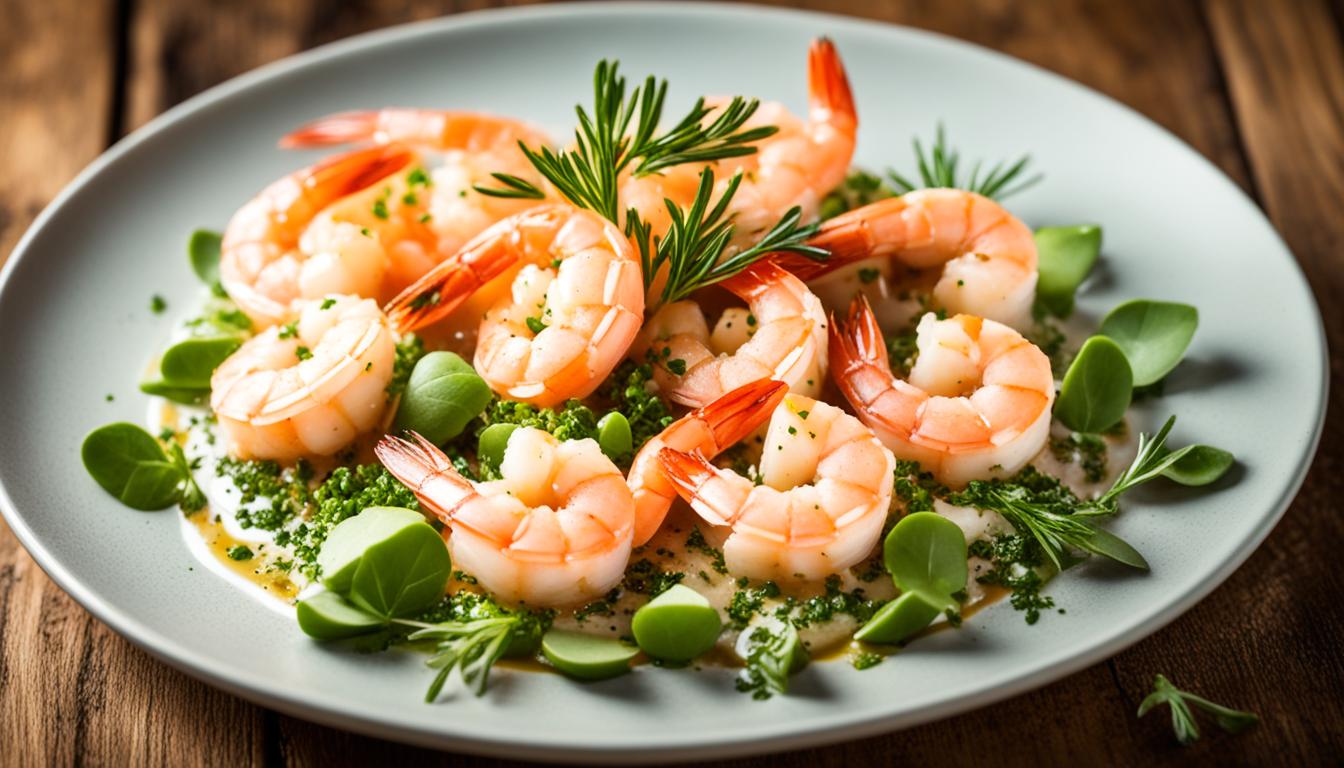Are you tired of overcooked, rubbery shrimp? Looking for a foolproof method to achieve perfectly tender and flavorful results? Look no further than sous vide cooking! Discover the secrets to cooking shrimp sous vide and unlock a whole new level of culinary excellence.
Cooking shrimp sous vide guarantees consistently plump, juicy, and flavorful results. Unlike traditional methods that often lead to overcooked or tough texture, sous vide provides precise temperature control that ensures perfectly cooked shrimp every time.
But why stop there? Sous vide also allows for the infusion of flavors, giving your shrimp a delightful depth of taste. Plus, it retains the natural flavors of the shrimp, which can sometimes get lost when using other cooking methods.
So, what is the ideal temperature for cooking shrimp sous vide? How long should you cook them for? And what are the additional tips and tricks for achieving the best results? Let’s dive in and explore all the answers!
Key Takeaways:
- Cooking shrimp sous vide ensures consistently plump, juicy, and flavorful results.
- Sous vide provides precise temperature control, preventing overcooking and resulting in tender shrimp.
- Infusing flavors and retaining the natural taste of the shrimp is an added advantage of sous vide cooking.
- The recommended temperature range for sous vide shrimp is 125°F to 140°F, with a cooking time of about 15 minutes.
- Proper handling and high-quality shrimp selection are crucial for achieving optimal texture and flavor.
The Benefits of Cooking Shrimp Sous Vide
Sous vide cooking offers several benefits when it comes to shrimp. One of the main advantages is the ability to achieve precise temperature control, eliminating the risk of overcooking and resulting in tender and juicy shrimp. With traditional cooking methods, it can be challenging to maintain the perfect temperature and cooking time, often leading to overcooked shrimp with a rubbery texture. However, sous vide ensures consistent results every time.
Another benefit of cooking shrimp sous vide is the retention of flavor. When shrimp are cooked using traditional methods, they can lose flavor to their cooking liquid. However, with sous vide, the flavor is sealed in the bag, resulting in extra-shrimpy and flavorful shrimp. The flavors are not diluted or lost during the cooking process, resulting in a more intense taste experience.
Additionally, cooking shrimp sous vide allows for the infusion of additional flavors. By adding herbs, spices, or aromatics to the bag, you can enhance the taste profile of the shrimp and create new and exciting flavor combinations. The longer cooking time of sous vide also allows for a better infusion of flavors compared to traditional methods.
Overall, cooking shrimp sous vide offers consistent results and the opportunity to explore different flavor profiles. Whether you prefer a classic shrimp dish or want to experiment with unique flavors, sous vide cooking provides a convenient and reliable method for achieving perfectly cooked, delicious shrimp.
The Advantages of Sous Vide Shrimp:
- Precise temperature control ensures tender and juicy shrimp
- Retains flavor, resulting in extra-shrimpy and flavorful shrimp
- Opportunity to infuse shrimp with additional flavors
- Consistent and reliable cooking method
- Exploration of various flavor profiles
How to Cook Sous Vide Shrimp
To achieve perfectly cooked shrimp every time, follow these step-by-step instructions for cooking shrimp sous vide:
- Start by setting up a water bath with a sous vide cooker at the desired temperature. We recommend a temperature range of 125°F to 140°F for sous vide shrimp.
- Toss the shrimp with a little baking soda to enhance texture and place them in a sealed bag.
- Optionally, add flavorings such as olive oil, butter, garlic, or herbs to the bag to infuse the shrimp with additional flavors.
- Remove air from the bag using a vacuum sealer or the water displacement method.
- Submerge the bag in the preheated water bath and cook for about 15 minutes. This cooking time ensures that the shrimp are fully cooked and tender.
- After cooking, remove the shrimp from the bag and serve hot. Alternatively, you can chill the shrimp for later use in salads, pasta dishes, or tacos.
Sous vide shrimp can be prepared with various flavors and seasonings. For a Spanish-inspired twist, try adding garlic, sherry, olive oil, and smoked paprika to the bag before cooking.
| Temperature | Cooking Time |
|---|---|
| 125°F | 15 minutes |
| 130°F | 15 minutes |
| 135°F | 15 minutes |
| 140°F | 15 minutes |
Table: Recommended temperatures and cooking times for sous vide shrimp.
Tips and Temperature for Cooking Sous Vide Shrimp
When it comes to cooking sous vide shrimp, a few tips can help you achieve optimal results. To start, it’s important to use high-quality shrimp, preferably without heads, as this helps avoid a mushy texture. Additionally, be sure to avoid cooking the shrimp for more than 30 minutes to prevent the enzymes from breaking down the shrimp’s structure.
The recommended temperature range for cooking sous vide shrimp is between 125°F and 140°F. Lower temperatures will result in a softer, buttery texture, while higher temperatures will resemble traditionally poached shrimp with a crisp, juicy bite. If you’re using thawed shrimp, they should be cooked for approximately 15 minutes. However, if you’re using frozen shrimp, you may need to increase the cooking time by an additional 10-15 minutes to ensure they’re properly cooked through.
Following these guidelines will guarantee tender and flavorful sous vide shrimp every time. So, next time you’re cooking shrimp sous vide, remember these tips and experiment with different temperature settings to find the perfect texture and flavor profile for your taste.
